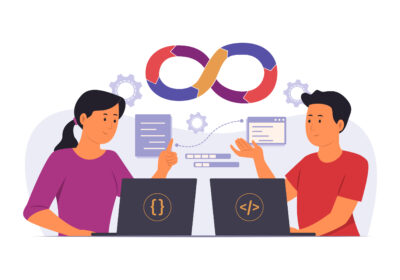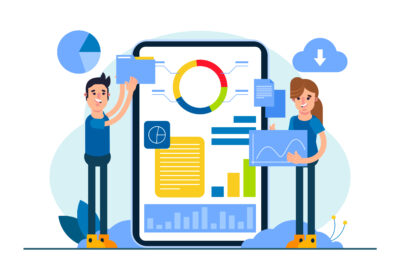In a digital-first marketplace where attention spans are short and choices are endless, delivering a great product experience (PX) has become a critical differentiator for e-commerce success. Shoppers are no longer influenced solely by price or brand recognition — their purchasing decisions are increasingly shaped by how well a product is presented, understood, and experienced online.
At Verbat, we believe that optimizing PX is no longer optional — it’s the foundation of sustainable growth, customer retention, and higher conversions. This blog explores what PX really means, why it matters, and how businesses can elevate their e-commerce strategy by making PX a strategic priority.
What Is Product Experience (PX)?
Product Experience (PX) refers to the complete digital interaction a customer has with a product — from discovery to decision-making. It encompasses everything that helps a customer evaluate, understand, and engage with a product before purchase, including:
-
Product descriptions and specifications
-
High-quality images and videos
-
360-degree views and AR experiences
-
Customer reviews and Q&A
-
Comparison tools and size guides
-
Mobile responsiveness and personalization
PX is not limited to aesthetics or content. It’s about delivering clarity, confidence, and convenience to the buyer at every digital touchpoint.
Why PX Is the New Driver of Conversions
The rise of digital-native consumers and mobile-first shopping has made PX a key performance lever. Here’s why PX is driving conversion and redefining e-commerce best practices:
1. Informed Buyers Convert Faster
Today’s consumers conduct extensive research before purchasing. A robust PX removes ambiguity and builds trust, enabling faster decision-making. According to industry data, products with detailed and rich content see a 30–50% increase in conversion rates compared to those with generic or limited information.
2. Reduced Return Rates
Lack of clarity around product details is a top reason for returns. PX elements like sizing charts, user-generated content, and visual context reduce the likelihood of buyer’s remorse. By improving how customers interpret product fit, function, or quality, businesses can reduce return rates and boost customer satisfaction.
3. Better Mobile Engagement
Over 60% of e-commerce traffic now originates from mobile devices. A seamless PX — with touch-optimized layouts, faster loading times, and visually digestible content — ensures higher engagement and conversion across all screen sizes.
4. Emotional Resonance Through Visuals
High-impact visuals, lifestyle imagery, and interactive features can evoke emotional connections that text alone cannot. These elements elevate a product’s perceived value and help align it with the customer’s aspirations — a key trigger for impulse buys.
Building a High-Impact Product Experience Strategy
Delivering superior PX requires a deliberate blend of content, technology, and customer insight. Here’s how to get it right:
1. Centralize and Enrich Product Content
Invest in a Product Information Management (PIM) system to streamline content management across channels. Enrich product pages with contextual storytelling, benefit-driven bullet points, and consistent tone of voice. Include comparison tools and FAQs to address buyer objections early.
2. Leverage Visual Commerce
Go beyond static images. Incorporate videos, user-generated content (UGC), zoom-in functionality, and 360° views. For fashion and lifestyle brands, virtual try-ons and augmented reality can dramatically improve purchase confidence.
3. Personalize the Experience
Use AI and behavioral data to deliver dynamic product recommendations, localized content, and recently viewed history. When PX aligns with customer intent, engagement naturally increases.
4. Optimize for Speed and Usability
Fast-loading, mobile-friendly, and intuitive interfaces are non-negotiable. Use A/B testing to continuously refine layouts, CTA placements, and media elements based on real user behavior.
5. Empower Customers Through Social Proof
Incorporate reviews, testimonials, and customer photos strategically throughout the product journey. Peer validation enhances credibility and helps replicate the tactile feel of in-store shopping.
The Role of PX in Omnichannel E-commerce
Great PX doesn’t end with a product page — it must extend across every digital and physical touchpoint. Whether a customer is discovering your product on Instagram, a marketplace, or your native app, the experience must be consistent and frictionless.
PX becomes even more powerful when integrated with:
-
Digital shelf optimization on third-party platforms
-
Voice commerce interfaces and chatbots for discovery
-
Post-purchase experiences like tailored instructions and follow-up offers
In omnichannel retail, consistency in product messaging, visual identity, and functional utility reinforces brand trust — and drives lifetime value.
How Verbat Helps Brands Win with PX
At Verbat, we combine deep e-commerce expertise with cutting-edge technology to help brands deliver high-converting, user-centric product experiences.
Our PX capabilities include:
-
Custom PIM solutions for scalable content management
-
UI/UX design and CRO services for mobile-first shopping experiences
-
AR/VR integrations to bring products to life
-
Analytics and performance tracking to optimize product engagement
-
Headless commerce architecture for agile omnichannel delivery
Whether you’re scaling an enterprise marketplace or refining your D2C strategy, we ensure that your PX directly contributes to business outcomes — from conversion to customer loyalty.
Final Thoughts
In today’s hyper-competitive e-commerce landscape, the quality of your product experience is a direct predictor of your conversion rate and brand equity. It’s no longer just about what you sell — it’s about how well you present, personalize, and position each product in the eyes of your customer.
By making PX a strategic pillar of your digital commerce roadmap, you set your brand apart — not just visually, but experientially.
Looking to elevate your e-commerce PX? Let’s talk. Verbat’s team of experience designers, technologists, and strategists are here to help.





